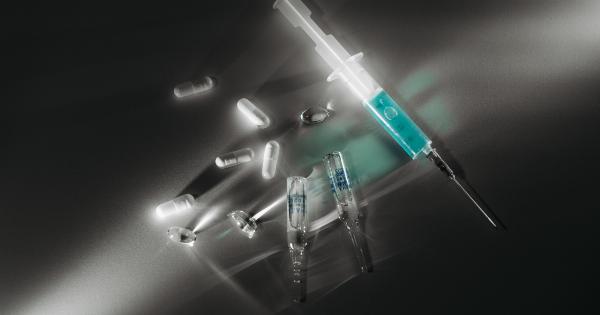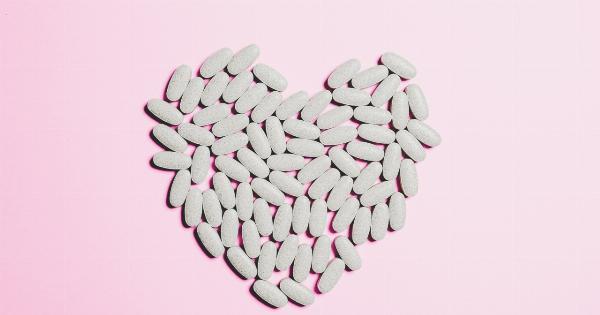Emergencies can occur suddenly and unexpectedly, causing various physiological responses in the body. Interestingly, research has found a link between emergencies and heart contractions in relation to breasts.
This article aims to delve into this intriguing connection, exploring the symptoms, causes, and treatments of various cardiac emergencies.
Understanding Heart Contractions
Before delving into the link between emergencies and heart contractions, it is essential to comprehend the basics of heart contractions. The heart contracts and relaxes rhythmically to pump blood throughout the body.
This rhythmic contraction is facilitated by electrical impulses that coordinate the heart’s chambers.
The Role of Breasts in Heart Contractions
Although the breasts may not seem directly related to heart contractions, they are anatomically connected through the lymphatic system.
The lymphatic system, comprising a network of vessels and lymph nodes, is responsible for the removal of waste material and toxins from various parts of the body, including the breasts. Studies have suggested that alterations or disruptions in the lymphatic system may impact heart contractions.
Cardiac Emergencies and Breast-Related Symptoms
Cardiac emergencies encompass a range of conditions that require immediate medical attention. In some cases, these emergencies present with breast-related symptoms, serving as potential indicators of underlying heart issues.
It is crucial to be aware of these symptoms to seek timely medical intervention. Some common symptoms include:.
1. Chest Pain or Discomfort
Chest pain or discomfort is one of the most prevalent symptoms associated with cardiac emergencies. In some cases, individuals may experience pain or discomfort radiating from the chest to the breasts.
This sensation could indicate a heart-related issue requiring urgent evaluation and treatment.
2. Shortness of Breath
Feeling short of breath can be alarming, especially if it occurs suddenly or is accompanied by other chest-related symptoms.
In some cardiac emergencies, individuals may experience difficulty breathing or a sense of breathlessness that may extend to the breasts.
3. Palpitations
Palpitations refer to an abnormal awareness of one’s heartbeat.
During certain emergencies, such as arrhythmias or heart rhythm disturbances, individuals may experience palpitations that can be felt not only in the chest but also in the breast area.
4. Swelling or Tenderness
In rare cases, cardiac emergencies can manifest as swelling or tenderness in the breasts. This symptom should not be ignored, as it may indicate the presence of an underlying heart condition.
Causes of Cardiac Emergencies and Their Effects on Breasts
Several factors can contribute to the occurrence of cardiac emergencies, each potentially exerting different effects on the breasts. Let’s explore some common causes:.
1. Heart Attack
A heart attack occurs when the blood supply to a part of the heart muscle is blocked, leading to tissue damage.
During a heart attack, the individual may experience chest pain that can radiate to the breasts due to the anatomical proximity between the heart and breasts.
2. Arrhythmias
Arrhythmias refer to abnormal heart rhythms that can occur due to various reasons, such as electrical conduction abnormalities or structural heart defects.
These disturbances can affect the coordination of heart contractions, potentially causing sensations of palpitations or irregular heartbeat in both the chest and breasts.
3. Heart Failure
Heart failure occurs when the heart is unable to pump blood effectively, leading to a buildup of fluid in various parts of the body.
The accumulation of fluid in the breasts can cause swelling or tenderness, highlighting the connection between heart contractions and breast symptoms.
Treatments and Prevention
Proper treatment and prevention strategies are crucial in managing cardiac emergencies and minimizing the impact on breast-related symptoms. The specific treatment approaches vary depending on the underlying cause of the emergency.
Some common strategies include:.
1. Medications
Pharmacological interventions, such as antiplatelet agents, blood thinners, and beta-blockers, may be prescribed to manage and prevent further cardiac emergencies.
These medications aim to improve heart function, reduce the risk of blood clots, and regulate heart rhythms, indirectly influencing any associated breast symptoms.
2. Lifestyle Modifications
Adopting a healthy lifestyle can significantly reduce the risk of cardiac emergencies. This includes maintaining a balanced diet, engaging in regular physical activity, avoiding tobacco and excessive alcohol consumption, and managing stress levels.
These lifestyle modifications promote overall heart health, potentially minimizing any breast-related symptoms.
Conclusion
In conclusion, emergencies and heart contractions are intricately linked, and this connection extends to breast-related symptoms.
Understanding the symptoms, causes, and treatments of cardiac emergencies is crucial in promptly addressing any potential heart issues. By being aware of the potential impact on breast symptoms, individuals can seek timely medical assistance, minimizing the consequences of these emergencies on overall health and wellbeing.































